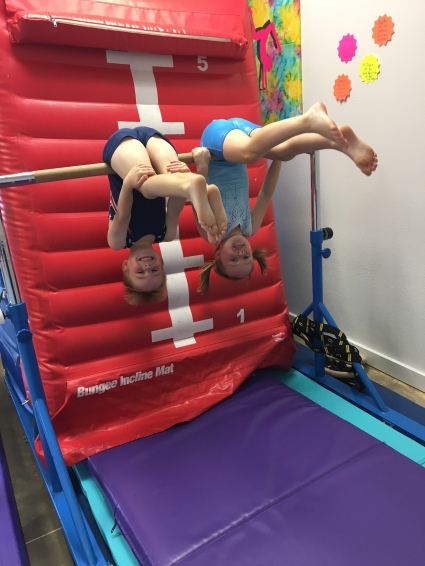You all know I’m no doctor or trained scientist, even though I’m my own experimenter and science project for my own health and wellness. A friend shared this article and it talks about the vestibular system, something I know only a little about because of a family member with vertigo. When I started reading the article, I didn’t anticipate how much it applied to us, but I realized how very important our gymnastics is for this crucial development. Of course, we have a laundry list of reasons gymnastics is important for children, especially in today’s world with less recess and free play at school and home, but they brought up some excellent research I myself have observed and noted with all the gymnastics and swimming I’ve taught through the 80s, 90s, and 2010s.
When I came back into swimming in 2012, I was surprised at just how weak children were. Being behind a desk and in front of a computer for 12 years during my corporate career, I understood how adults weren’t necessarily as strong and fit anymore, but kids? That surprised me. I knew video games and parents’ busy work schedules had changed children’s after school routines and activities somewhat and technology definitely took advantage of this, but the extremes I was seeing was astounding.
Kids couldn’t pull themselves out of swimming pools. If there weren’t steps, they were winded stepping up a ladder. We had to do strength training in our lessons to develop the muscles enough to climb out at the side of the pool. I had to adjust the activity in the swim lessons to give the child a chance to recover physically but keep working and making progress.
Kids used to climb out of the pool on Day 1 of lessons, even if they’d never done it before. In today’s world, it’s a completion goal I have for my lessons. I’m hoping I can help them develop enough strength to climb out of the pool by their last lesson in their first package with me. That’s 8 lessons. Some kids need even longer to develop that strength. This observation is not something I’ve discussed, but it is important to note.
A common complaint in the gym these days is their wrists hurt or their legs are tired. That’s simply because they’re not playing in ways to develop and keep up the strength in their wrists and legs. Handwriting dexterity is another example of the fatigue our children are experiencing due to altered and limited play. We spend time in the gym working to develop strength, coordination, and body awareness that we previously did not need to explain, teach, or nurture because they used to gain in through free play and recess at school and home. Because of all of our modern conveniences, busy schedules, technology, and even the enhanced dangers of running free outside, we now must be more intentional to make sure our children are getting the movement they need.
I encourage you to read the article because it points out the importance of movement in all directions including spinning, jumping, climbing, running, swinging, hanging, being upside down, and any other direction you can think of. Without that movement, they are not fully developing their vestibular system, or inner ear area.
As for what the impact will be later in life, it may be a couple more decades before we start seeing research about it. Be proactive and make sure your children are receiving the type of physical challenges they need to fully develop.

Have a great and successful day!
Sincerely,


